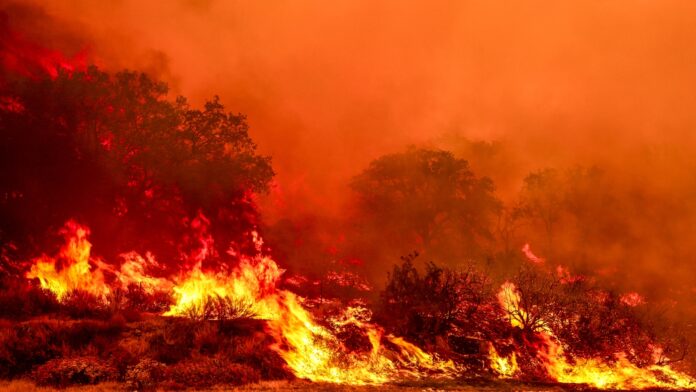"Roads to Ruin? The Controversial Push to Rescind Protections in America’s Forests Amid Rising Wildfire Risks"
The Gifford Fire: A Catalyst for Debate on Roadless Areas and Wildfire Management
Date: October 10, 2023
As California grapples with the aftermath of the Gifford Fire, the largest wildfire to ignite in the state this year, discussions surrounding wildfire management and forest health have intensified. The Gifford Fire, which began near a road, underscores a critical point: research indicates that wildfires are significantly more likely to start within 50 feet of roadways. This alarming trend raises questions about the implications of proposed changes to the management of national forests, particularly concerning the controversial Roadless Rule.
The Roadless Rule: A Brief Overview
Established in 2001, the Roadless Rule protects nearly 60 million acres of national forest land from road construction and logging. The U.S. Department of Agriculture (USDA) is now poised to rescind this rule, a move that the Trump administration argues will enhance wildfire suppression efforts. U.S. Forest Service Chief Tom Schultz stated, "For nearly 25 years, the Roadless Rule has frustrated land managers and served as a barrier to action—prohibiting road construction, which has limited wildfire suppression and active forest management."
However, experts in forest ecology and fire science caution against this approach. Alexandra Syphard, a senior research scientist with the Conservation Biology Institute, emphasizes that the relationship between roads and wildfires is complex. "One of the most fundamental concepts in fire geography is that roads are the dominant place where you see ignitions," she explains. This correlation is largely due to human activity; where there are roads, there are people, and consequently, a higher likelihood of wildfires.
The Unintended Consequences of Road Construction
A 2020 study by the Forest Service’s Rocky Mountain Research Station revealed that non-native plant species are twice as prevalent within 500 feet of roads compared to areas further away. This shift in vegetation can alter fire behavior and increase the risk of wildfires. The study concluded that the assertion that eliminating road prohibitions would improve forest health is not supported by nearly two decades of monitoring.
Despite these findings, the USDA has not publicly commented on the implications of rescinding the Roadless Rule. Critics argue that the push to build more roads is driven more by a desire to increase timber production than by genuine concerns for wildfire management. In March, President Trump signed an executive order calling for a 25% increase in the nation’s timber production, raising further concerns among environmental organizations.
Historical Context and Current Implications
The Roadless Rule has been a contentious issue since its inception, leading to numerous legal battles between states, industry stakeholders, and environmental groups. During his first term, President Trump lifted roadless protections for Alaska’s Tongass National Forest, the largest intact temperate rainforest in the world. However, these protections were reinstated by the Biden administration in 2023.
Former Forest Service Chief Dale Bosworth, who served under President George W. Bush, argues that the areas designated as roadless were left that way for a reason: they lack significant timber resources and are often too costly to access. He suggests that existing provisions within the Roadless Rule allow for limited logging to improve forest health and reduce wildfire risk without the need for extensive road construction.
The Role of Roads in Wildfire Management
While roads can facilitate quicker detection and suppression of wildfires, they also pose risks. A 2021 study from Oregon found that while roadless areas had fewer ignitions, the fires that did occur tended to burn more land. Matt Thompson, a former research forester, notes that roads can serve as fuel breaks, but their construction must be approached with caution to avoid creating new risks.
The USDA has identified 28 million acres of roadless areas at high or very high risk of wildfire, but the specifics of these areas remain unclear. Thompson advocates for a "surgical approach" to road construction, suggesting that targeted road building could enhance firefighter safety and protect communities.
Conclusion
As the Gifford Fire continues to burn, the debate over the Roadless Rule and its implications for wildfire management is far from settled. The public comment period on the proposed rescission of the Roadless Rule ends on September 19, 2023, and stakeholders from various sectors are weighing in on the potential consequences of this significant policy shift. The intersection of road construction, forest health, and wildfire risk remains a critical area of study as California and other states face an increasingly volatile fire season.
